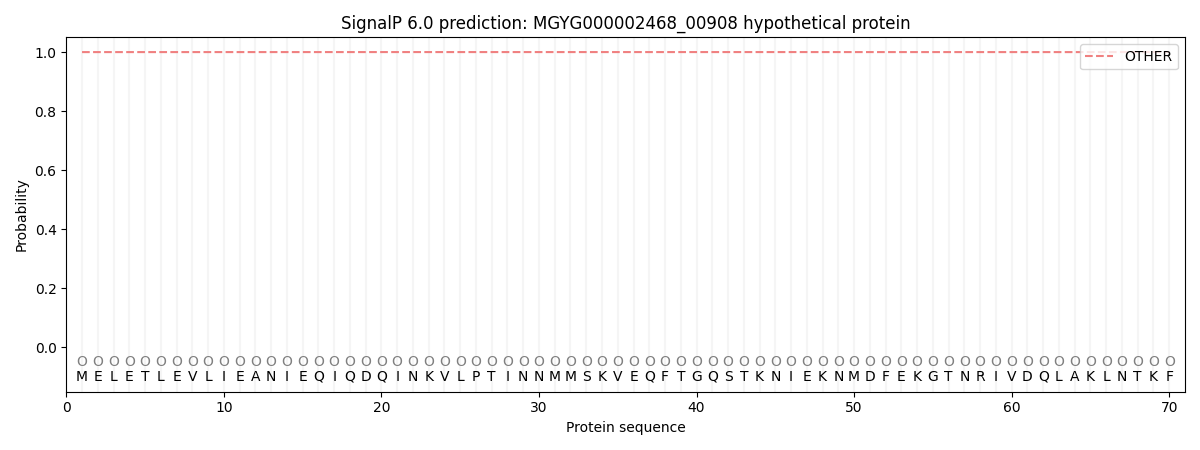You are browsing environment: HUMAN GUT
CAZyme Information: MGYG000002468_00908
You are here: Home > Sequence: MGYG000002468_00908
Basic Information |
Genomic context |
Full Sequence |
Enzyme annotations |
CAZy signature domains |
CDD domains |
CAZyme hits |
PDB hits |
Swiss-Prot hits |
SignalP and Lipop annotations |
TMHMM annotations
Basic Information help
| Species | Enterococcus caccae | |||||||||||
|---|---|---|---|---|---|---|---|---|---|---|---|---|
| Lineage | Bacteria; Firmicutes; Bacilli; Lactobacillales; Enterococcaceae; Enterococcus; Enterococcus caccae | |||||||||||
| CAZyme ID | MGYG000002468_00908 | |||||||||||
| CAZy Family | GH23 | |||||||||||
| CAZyme Description | hypothetical protein | |||||||||||
| CAZyme Property |
|
|||||||||||
| Genome Property |
|
|||||||||||
| Gene Location | Start: 210277; End: 215133 Strand: - | |||||||||||
CDD Domains download full data without filtering help
| Cdd ID | Domain | E-Value | qStart | qEnd | sStart | sEnd | Domain Description |
|---|---|---|---|---|---|---|---|
| TIGR02168 | SMC_prok_B | 9.81e-07 | 51 | 329 | 236 | 530 | chromosome segregation protein SMC, common bacterial type. SMC (structural maintenance of chromosomes) proteins bind DNA and act in organizing and segregating chromosomes for partition. SMC proteins are found in bacteria, archaea, and eukaryotes. This family represents the SMC protein of most bacteria. The smc gene is often associated with scpB (TIGR00281) and scpA genes, where scp stands for segregation and condensation protein. SMC was shown (in Caulobacter crescentus) to be induced early in S phase but present and bound to DNA throughout the cell cycle. [Cellular processes, Cell division, DNA metabolism, Chromosome-associated proteins] |
| COG1196 | Smc | 1.67e-06 | 28 | 276 | 669 | 911 | Chromosome segregation ATPase [Cell cycle control, cell division, chromosome partitioning]. |
| COG5280 | YqbO | 1.74e-06 | 954 | 1133 | 456 | 627 | Phage-related minor tail protein [Mobilome: prophages, transposons]. |
| COG4372 | COG4372 | 2.70e-06 | 52 | 297 | 65 | 312 | Uncharacterized conserved protein, contains DUF3084 domain [Function unknown]. |
| TIGR01612 | 235kDa-fam | 4.13e-06 | 16 | 516 | 580 | 1128 | reticulocyte binding/rhoptry protein. This model represents a group of paralogous families in plasmodium species alternately annotated as reticulocyte binding protein, 235-kDa family protein and rhoptry protein. Rhoptry protein is localized on the cell surface and is extremely large (although apparently lacking in repeat structure) and is important for the process of invasion of the RBCs by the parasite. These proteins are found in P. falciparum, P. vivax and P. yoelii. |
CAZyme Hits help
| Hit ID | E-Value | Query Start | Query End | Hit Start | Hit End |
|---|---|---|---|---|---|
| ADH03098.1 | 2.66e-287 | 1 | 1616 | 3 | 1565 |
| QRZ11460.1 | 3.98e-247 | 1 | 1618 | 1 | 1553 |
| QSQ99527.1 | 1.11e-243 | 1 | 1616 | 1 | 1558 |
| QIL47031.1 | 5.86e-243 | 1 | 1451 | 1 | 1268 |
| QEA60941.1 | 2.06e-234 | 1 | 1618 | 1 | 1593 |
Swiss-Prot Hits help
SignalP and Lipop Annotations help
This protein is predicted as OTHER

| Other | SP_Sec_SPI | LIPO_Sec_SPII | TAT_Tat_SPI | TATLIP_Sec_SPII | PILIN_Sec_SPIII |
|---|---|---|---|---|---|
| 1.000060 | 0.000000 | 0.000000 | 0.000000 | 0.000000 | 0.000000 |

